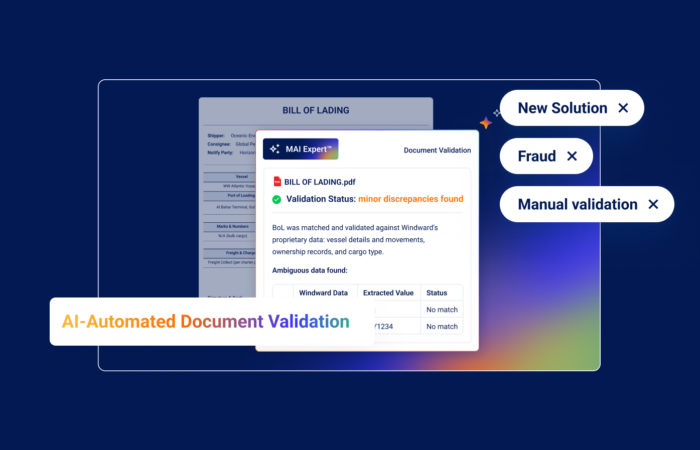From advisory to adoption: The AIS switch-off clause

What’s inside?
On July 16, BIMCO released a new clause concerning AIS manipulation. Why? In 2020, OFAC issued an advisory stating that the shipping industry should develop provisions “in the form of an AIS ‘switch-off’ clause”. The intention was that it would help shipowners, charterers, and operators to block high-risk business. But it’s important to remember that OFAC is an advisory, not a must-have for the industry. For true adoption, organizations are following with their own measures to ensure compliance.
What was BIMCO’s concern?
Without a mission-critical statement in place, charterers could develop their own clauses to meet minimum compliance requirements. So for example, charterers could choose to permit cases where the AIS had been switched off for legitimate reasons, or the signal failed to transmit or be received for reasons outside an owner’s control. However, this leaves room for missing the mark when it comes to compliance best practices.
That’s why the new BIMCO clause addresses not only the use of the AIS during the charter party but also prior to the contract. The clause recognizes that there may be legitimate reasons for the AIS gaps. So, for a charterer to terminate the charter party for a breach of on use of AIS, the charterer will have to prove that there was intent by the owner to hide the signal. But how do you prove when cases are legitimate or deceptive?
A move to promote adoption
The latest clause makes it clear that AIS monitoring is no longer a simple suggested practice. According to Matt Stoney, managing partner at Stonefort Marine Consultancy,
“inclusion of clauses that demonstrate commitment to compliance is a must-have for all prudent operators – setting a fair standard such as this one will likely become one of those red clauses.”
The bottom-line? It’s going to be in your charter party. But how will charterers manage it in practice? Imagine your cargo is stranded at port due to suspected sanctionable activity. In order to avoid costly fines, strong evidence needs to be provided to demonstrate that all compliance measures were properly taken. Or else the fallout could result in no less than millions of dollars in fines. It becomes hard to prove compliance if you don’t have a strong system to back it up. And AIS manipulation is no easy practice to effectively monitor and detect.
In remote areas with low satellite coverage, vessels may keep transmitting without the signals reaching coastal stations, indicating potential switch-off. These are mainly results of basic algorithms that are cannot filter noise while pinpointing meaningful events worth flagging. On a given day, the global merchant fleet records 9,947 AIS gaps. Only 1,400 events are considered as dark activities, with a high likelihood of deliberate AIS disablement, while only 20 events indicated potentially sanctionable activity.
Good actors, who represent the vast majority of the industry, shouldn’t have to miss out on business at the cost of regulations. To what extent can they lean on risk management providers rather than build data system capabilities themselves? How can we do more to ensure that all stakeholders are benefiting from an efficient due diligence process?
The power of data
It all comes down to actionable insights and explainable data. For example, in the recent hijacking involving the ASPHALT PRINCESS, news reported of six vessels involved. One of them was the GOLDEN BRILLIANT. On July 20th, the GOLDEN BRILLIANT arrived in the Gulf of Oman. On July 21st, it began a dark activity event that lasted three days. The vessel then appeared to be drifting at the same speed for close to seven days. This is not a common drifting pattern for tankers, which led our system to alert our customers that the tanker wasn’t actually there. What does this mean? By using machine-generated location tampering, bad actors falsified the GPS reading transmitted via the AIS device to transmit a different location than the vessel’s real whereabouts.
This is why critical insights on the behavior of vessels are key to corroborating if the information transmitted via AIS systems matches the historical data of thousands of other vessels. In doing so, robust tools can accurately identify cases of potential risk exposure.
Using rule-based systems that simply check the presence of an AIS signal, or ones that don’t leverage behavioral data, is simply not enough. Contact us to learn how we can help you maximize business – no matter today’s increasingly sophisticated compliance requirements.














